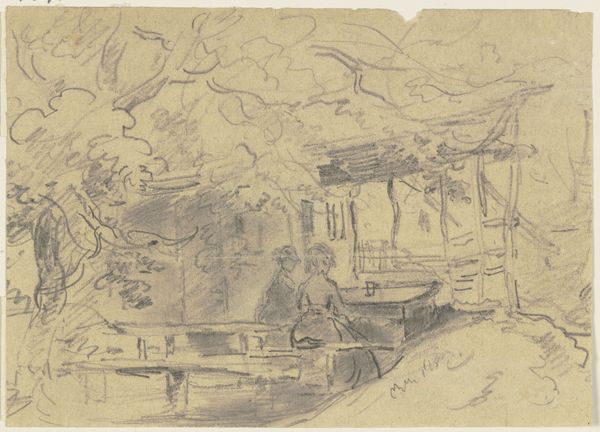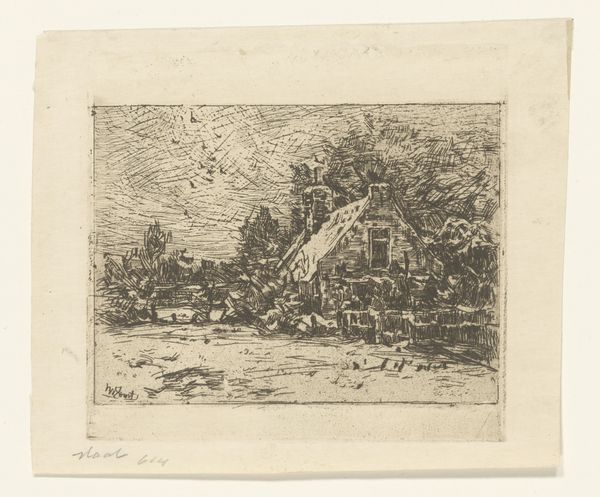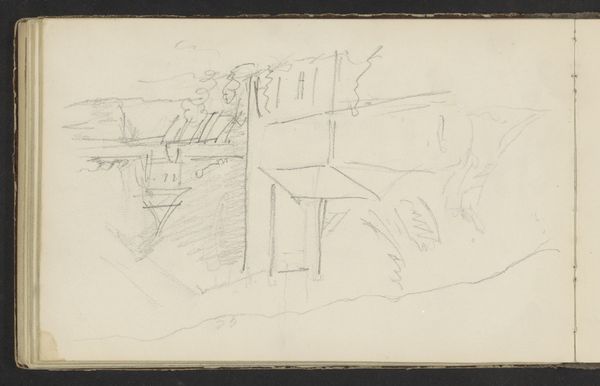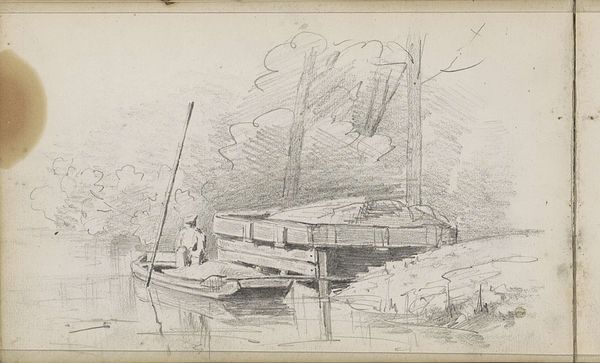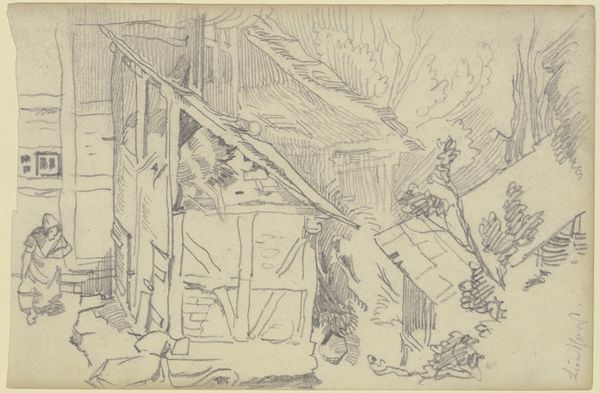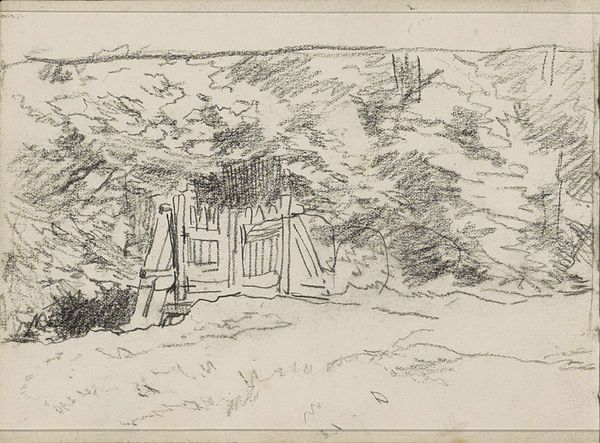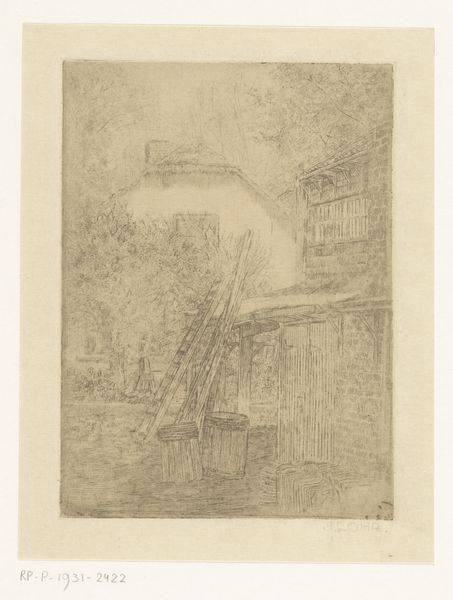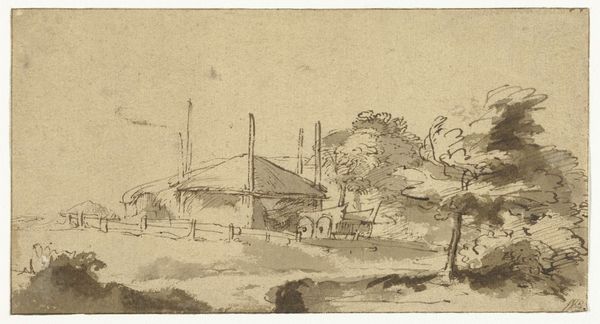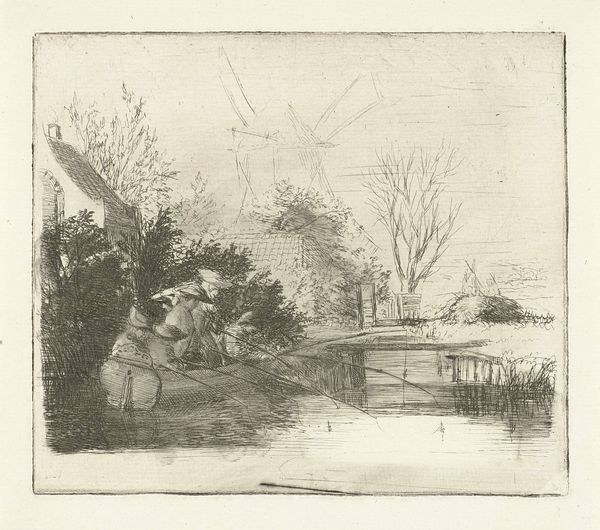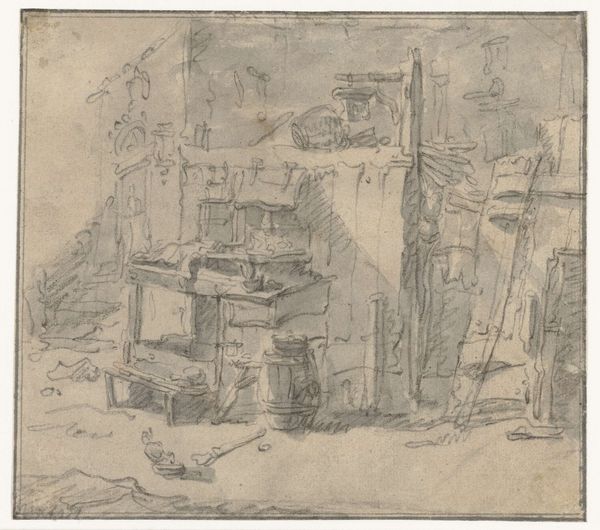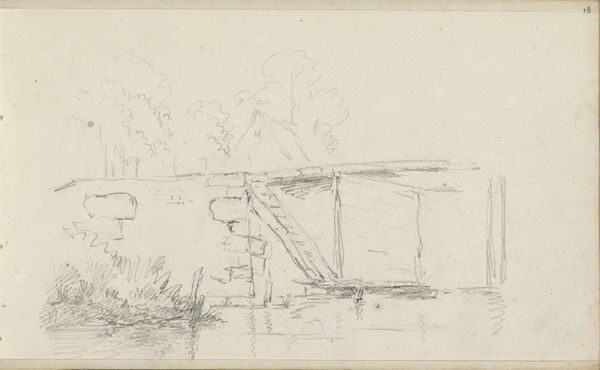
drawing, etching, ink
#
drawing
#
etching
#
landscape
#
etching
#
ink
#
realism
Dimensions: height 150 mm, width 200 mm
Copyright: Rijks Museum: Open Domain
Editor: So, this is Johannes Löhr's "Boerderij met rieten dak," which translates to "Farmhouse with a thatched roof," an etching made sometime between 1892 and 1928. It's a rather humble scene, isn't it? What strikes you most about this seemingly simple depiction of a farm? Curator: The immediate pull for me is the house itself, a near-universal symbol. But this isn't just shelter; notice the way Löhr renders the thatched roof. What does that texture and those slightly drooping lines evoke for you? Editor: I suppose a sense of age, maybe even weariness? It doesn’t look brand new. Curator: Precisely. It carries the weight of time, of countless seasons endured. The thatch isn’t just a roofing material; it’s a record. And the dark doorway... doesn’t it seem to invite both curiosity, and maybe even a bit of apprehension? It reminds us of thresholds, the symbolic spaces of transformation in myth and lore. Do you think the bucket beside it has a significance, too? Editor: Maybe. Is it about work, a tool perhaps, and life lived at a particular pace? Also, the trees overhead… it feels very exposed to the elements. Curator: You're right to notice the environment bearing down on the building. Trees and foliage symbolize cyclical life. Do you suppose it's about how fleeting our own tenure is? Notice how it suggests that human structures, like the barn, are eventually reclaimed. Even the sturdiest looking construction seems vulnerable over the march of time. What do you think about that in relationship to your initial interpretation of a humble scene? Editor: It makes me see a hidden narrative, something more profound about time passing, life carrying on regardless... much more than just a farmhouse! I would have overlooked all of that! Curator: These scenes often serve as mirrors, reflecting back our own preoccupations and concerns. Next time, consider what they're showing you of yourself.
Comments
No comments
Be the first to comment and join the conversation on the ultimate creative platform.
